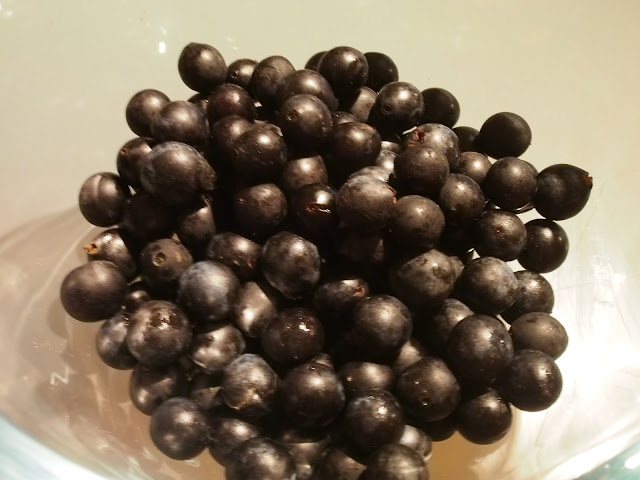Another trip to Canberra and another haul of kiwifruit!
Back in July 2014, at the peak of kiwifruit season, I helped pick kiwifruit from my girlfriend's family vines. They were particularly abundant last year due to the way they had been pruned at the end of the 2013 season - the fruit was practically falling off the vines.
Picking kiwifruit, particularly when the vines have been grown over a pergola, is pretty labour intensive. I would try to be strategic, get up on the ladder, reach for a large bunch, and give it a good yank, but inevitably that action would cause the surrounding fruit to rain down, mostly straight onto my head. It's like be pelted with hairy golf balls.
The other issue with picking kiwifruit is that a lot of them are too small to be eaten, or might be bruised or partially chomped on by birds. We went through a sorting process to discard the dodgy ones, and then sorted the rest into smaller and larger sizes. The larger ones were set aside to eat fresh, and I decided to use the smaller ones to make a kiwifruit jelly.
I had previously made kiwifruit jam using store-bought kiwifruit. The store-bought variety are much less hairy than the variety we picked, and due to this hairiness, it would be difficult to make a jam - a lot of hair could easily have ended up in the mix with the fruit.
A jelly, as opposed to a jam, is strained through muslin, so I thought it would be perfect to take the jelly approach to filter out any incidental kiwifruit hair that made its way into the mix while processing the fruit.
Picking the kiwifruit is only the first step. The next is to wait until they ripen. Surprisingly, it took about three weeks to ripen and soften enough that we could scoop out the flesh. If you store the kiwifruit with other fruit, particularly
bananas, the ripening process will be much faster.
The recipe I used is an adapted Feijoa jelly recipe. The ingredients of the jelly are really simple - some lemon juice is added into the mix to help bring out the pectin.
The resulting jelly is really refined and delicious, but has a fantastic tanginess. It also spreads really nicely across a piece of toast, and is even better with fresh scones!
Kiwifruit Jelly Recipe
Ingredients
- 2-3kg of kiwifruit;
- water;
- 1.5kg of white sugar.
Making the jelly:
- Wash the kiwifruit to get rid of any excess hair.
- Slice the kiwifruit in half.
- Using a spoon, scoop out the flesh of the kiwifruit into a bowl, discarding the skin. Try to get a few people to help you - this process can take a while, particularly if the kiwifruit are small.
- Place the kiwifruit flesh into a pot and add water to just below the level of the fruit.
- Bring the mixture to the boil and then turn the heat down. Simmer the fruit mixture for around 40 minutes until the fruit has broken down (see photo above).
- Place a muslin cloth over a sieve and then strain the mixture through it. Leave for a few hours until all of the syrup has been extracted. If you push the mixture through it will affect the clarity of the jelly, making it more cloudy.
- Return the syrup to a new pot, measuring it as you go. Then add 3/4 cup of sugar into the pot for every cup of syrup.
- Bring the mixture to the boil and reduce the mixture. You will know when the jelly is ready by doing the cold saucer test (place a saucer in the freezer for 5-10 minutes until it is icy cold. If you spoon a bit of the jelly on to the plate it should form a jelly-like glob rather than dispersing)
- When the jelly is finished, pour it into sterilised jars.












































